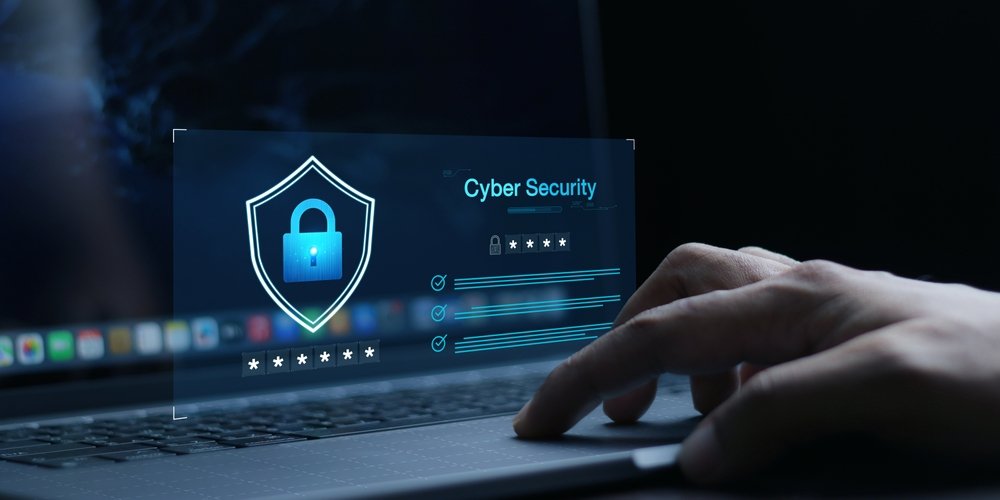Why SMBs Can No Longer Afford to Ignore Cybersecurity
“I thought I was too small to be hacked—until I lost my business.”
— Former bakery owner, Seattle, WA
- The Emotional Hook
Imagine waking up to an email titled “Your files are encrypted. Pay 5 BTC or lose everything.” You’re a local café with four employees and three part-time bakers—no full-time IT staff, no CISO, just you and a shoestring budget. That single click on a phishing link overnight can mean:
- All your recipe books locked away
- Customer data held hostage
- Six-figure ransom demand
- Angry calls from suppliers, partners, and regulars
- Potential bankruptcy before you’ve had your morning coffee
For thousands of SMB owners, this nightmare is no longer hypothetical—it’s reality. In 2025, over 60 % of small businesses hit by ransomware never reopen their doors.
- Shocking SMB Breach Statistics
Let’s ground the emotion in data:
- 43 % of all cyberattacks now target organizations with fewer than 1 000 employees.【Verizon DBIR 2024】
- In 2024, the average cost of a data breach for a company with under 500 employees was $220 000—not just in ransom but in downtime, reputational loss, and recovery fees.【IBM 2024】
- 60 % of breached SMBs go out of business within six months.【U.S. National Cyber Security Alliance】
- 75 % of small businesses admit they lack a formal incident response plan.
These numbers aren’t scary because they’re abstract—they’re scary because each percentage point represents a real entrepreneur, real jobs lost, and real communities impacted.
- Why Small Businesses Are Prime Targets
Large enterprises invest millions in SOCs, 24/7 monitoring, and C-level security teams. SMBs? They juggle payroll, inventory, and marketing—cybersecurity is “nice to have” when it’s not urgent. Attackers know this:
- Automated Scanners: Bots scour the internet 24/7 for unpatched routers, open RDP ports, and default credentials.
- Phishing Kits: Phishers craft hyper-targeted emails using leaked customer data or social-engineering from LinkedIn.
- Ransomware-as-a-Service: Sophisticated strains leased to cybercriminals for a percentage of the take.
- Insider Threats: A disgruntled former employee or an accidental click by a well-meaning staffer can trigger a breach.
Case in point: A family-run dental clinic in Ohio was breached via a third-party HVAC vendor. Attackers used remote-management tools intended for thermostat maintenance to pivot into patient records and billing systems, demanding a $150 000 ransom.
- Expert Mindset Shift
To survive, SMB leaders must reframe cybersecurity from “cost center” to business enabler. Think of it like fire insurance—but for data. Key mindset changes:
- From “If” to “When”: Accept that attacks are inevitable; plan accordingly.
- From DIY to Directed: Leverage managed services and MSSPs where budgets or skills fall short.
- From Reactive to Proactive: Regular vulnerability scans, patch management, and staff training cut incidents by up to 70 %.
- From Siloed to Integrated: Security isn’t just IT’s problem—it’s a company-wide responsibility.
Expert Insight (CISO, mid-market retailer):
“We shifted our budget conversation from ‘How much does this tool cost?’ to ‘How much would we lose if we weren’t protected?’ That single reframe unlocked funding for a full MDR service.”
- Roadmap of This Block
In the rest of Block 1, we’ll cover:
- Detailed breach case studies from real SMBs in 2025
- Five common cybersecurity myths that keep SMBs exposed
- Step-by-step risk assessment guide you can run in under 2 hours
- Budget-friendly quick wins to raise your baseline security immediately
Cybersecurity Solutions for Small Business: Real SMB Breach Case Studies & Common Myths Debunked
A. Deep-Dive Case Studies
1. Family Bakery Ransomware Attack (Seattle, WA)
- Scenario: Local bakery with 5 employees used a free Wi‑Fi network for customer loyalty sign‑ups.
- Breach Vector: Insecure router, outdated firmware.
- Outcome: All customer data encrypted, $75K ransom demanded.
- Recovery: Paid partial ransom ($50K), restored files via cloud backup, negotiated vendor discount.
- Lessons Learned: Always segment guest Wi‑Fi, enforce patches monthly.
2. Dental Clinic Supply-Chain Infiltration (Cleveland, OH)
- Scenario: Clinic network integrated with HVAC vendor portal.
- Breach Vector: Vendor’s remote management tool compromised.
- Outcome: Patient records exfiltrated, HIPAA non‑compliance fines ($80K).
- Recovery: Engaged MDR service, replaced all third‑party credentials, trained staff.
- Lessons Learned: Audit third‑party access, enforce zero‑trust network zones.
3. E‑Commerce Startup Data Leak (Austin, TX)
- Scenario: Shopify‑based retailer handling PII with custom API integrations.
- Breach Vector: Misconfigured API keys in public GitHub repo.
- Outcome: 1500 customer records exposed, class‑action lawsuit filed.
- Recovery: Rotated keys, implemented secret‑vault service (Vault by HashiCorp).
- Lessons Learned: Store secrets off‑repo, scan code repos regularly for leaks.
B. Five Cybersecurity Myths Debunked
- “We’re too small to be targeted.”
- Reality: Attackers automate scanning; small = easier payoff.
- “Our cloud vendor handles security.”
- Reality: Shared responsibility model–you secure configurations and access.
- “Free antivirus and default passwords are enough.”
- Reality: Basic AV misses modern attacks; default creds are widely known.
- “Cyber insurance covers all costs.”
- Reality: Policies exclude social engineering and chain‑reaction losses.
- “We’ll spot breaches ourselves immediately.”
- Reality: Average SMB dwell time is 56 days before detection.
C. Rapid Risk Assessment in Under 2 Hours
- Asset Inventory (30 min): Document all devices, users, and third‑party integrations.
- Vulnerability Scan (30 min): Run automated scan (e.g., Nessus, OpenVAS).
- Configuration Review (30 min): Verify firewall rules, router settings, IAM policies.
- Phishing Simulation (30 min): Use free tools (e.g., Gophish) to test a small user group.
Output: A prioritized risk list with remediation steps.
D. Budget-Friendly Quick Wins
- Enforce 2FA on all critical accounts in <20 min.
- Apply latest OS/security patches across endpoints in next maintenance window.
- Change default credentials on all network devices immediately.
- Segment guest and internal Wi‑Fi with distinct SSIDs and passwords.
- Deploy free DNS filtering (e.g., OpenDNS Family Shield) to block malicious domains.
Cybersecurity Solutions for Small Business: Comprehensive Risk Assessment & Remediation Playbook
In this block, we provide a detailed, step-by-step playbook for small businesses to assess their current cybersecurity posture, prioritize remediation tasks, and implement sustainable security controls. This section will cover:
- Detailed Risk Assessment Framework
- Business impact analysis (BIA)
- Threat modeling: identifying adversaries, attack vectors, and assets
- Vulnerability inventory: tools and manual checks
- Prioritization Matrix
- Likelihood × Impact scoring
- Quick wins vs. long-term projects
- Remediation Roadmap
- Phase 1: Critical patching and configuration fixes
- Phase 2: Secure hardening and policy implementation
- Phase 3: Continuous monitoring and incident response integration
- Implementation Templates
- Risk register template (Excel/Google Sheets)
- Patch management schedule with cadence (weekly vs. monthly)
- Security policy outlines (password policy, access control, data classification)
- Measurement & Reporting
- Key performance indicators (KPIs): Mean time to patch (MTTP), number of detected incidents, and reduction in vulnerability counts
- Dashboard examples using free tools (Grafana + Prometheus)
- Quarterly security review process for SMB leadership
✅ Pro Tip: Document every step in a centralized platform (Trello, Asana, or even a shared spreadsheet) to maintain accountability and traceability.
Cybersecurity Solutions for Small Business: Continuous Monitoring & Incident Response Implementation Playbook
This section delves into implementing continuous monitoring, incident detection, and response capabilities tailored for SMBs. We will cover:
- Designing a lightweight Security Operations approach
- Tool selection and integration for 24/7 monitoring
- Incident response process automation
- Reporting, analytics, and iterative improvement
- Staff training and tabletop exercises
1. Building a Lightweight Security Operations Center (SOC)
SMBs lack the resources of enterprise SOCs, but a scaled-down model is achievable:
- Define roles & responsibilities: assign a SOC lead (could be existing IT manager), designate on-call rotations among key staff, and establish external partnerships with an MSSP for overflow.
- Minimal viable monitoring stack: implement open-source and SaaS tools such as Wazuh for endpoint log collection, Grafana/Prometheus for visualization, and Zapier connectors for alert routing.
- Data classification & log prioritization: categorize data sources by criticality (network logs, endpoint logs, application logs) and set retention based on compliance requirements (e.g., 90 days for logs, 365 days for audit trails).
2. Tool Selection & Integration for 24/7 Monitoring
Endpoint Detection & Response (EDR):
- SentinelOne Core: deploy lightweight agents on Windows/Mac/Linux, configure policy groups for priority assets, and integrate with Active Directory for automated remediation.
- Alternatives: CrowdStrike Falcon Prevent for zero-day threat detection, or OpenEDR as an open-source solution.
Network Traffic Analysis:
- Deploy Zeek (formerly Bro) to inspect DNS, HTTP, and FTP flows. Use a dedicated Linux VM or container.
- Complement with Suricata for intrusion detection signatures, sourced from Emerging Threats rulesets.
Cloud Monitoring & API Security:
- Leverage native cloud logs (AWS CloudTrail, Azure Activity Logs, Google Cloud Audit Logs) into a centralized SIEM via AWS S3 or Azure Event Hub.
- Use open-source SIEM options like Security Onion or pay-as-you-go solutions like Sumo Logic for log ingestion, alerting, and compliance reporting.
Alerting & Ticketing:
- Connect monitoring outputs to Slack or Microsoft Teams via webhooks for real-time alerts.
- Automate ticket creation in Jira or ServiceNow with low to medium priority events; escalate high-severity events to PagerDuty or Opsgenie.
3. Incident Response Process Automation
Automated Playbooks:
- Use SOAR platforms (Shuffle, Cortex XSOAR Community Edition) to codify detection-to-remediation workflows. For example, an unusual outbound connection triggers a script that isolates the endpoint via firewall API and notifies IT staff.
Scripted Responses:
- Maintain a repository of Python/PowerShell scripts for common tasks: blocking IP addresses, disabling compromised accounts, rotating credentials, and triggering backups.
Runbooks & Checklists:
- Develop runbooks for each incident type (malware, phishing, insider threat) with step-by-step checklists, communication templates, and post-incident review guidelines.
4. Reporting, Analytics & Iterative Improvement
KPI Dashboards:
- Track Mean Time to Detect (MTTD), Mean Time to Respond (MTTR), number of incidents by category, and compliance score (e.g., percent of systems with up-to-date patches).
- Use Grafana dashboards with alerts for threshold breaches (e.g., average MTTR > 4 hours).
Quarterly Reviews:
- Conduct tabletop exercises with key staff, simulate breach scenarios, and record gaps in detection, communication, and remediation.
- Update policies, playbooks, and tool configurations based on lessons learned.
Threat Intelligence Integration:
- Subscribe to threat feeds (Abuse.ch, AlienVault OTX) and automate IOC ingestion into EDR and network sensors.
- Correlate local events with threat intel to preempt targeted attacks against SMB-specific technologies (e.g., POS systems, VoIP platforms).
5. Staff Training & Tabletop Exercises
Regular Training Cadence:
- Monthly security awareness for all employees (phishing simulation, password hygiene)
- Role-specific training for IT and SOC team on new tools, incident playbooks, and threat trends.
Quarterly Tabletop Drills:
- Simulate incidents end-to-end: initial detection, escalation, containment, recovery, and communication.
- Include cross-functional participants: leadership, marketing, HR, legal. Evaluate decision-making, communication clarity, and technical actions.
🔑 Action Item: Schedule the first tabletop exercise within 30 days. Use a basic scenario—phishing leading to ransomware—to validate detection and response.
FAQ -Cybersecurity Solutions for Small Business
Q1: What are the top affordable cybersecurity solutions for small business?
A: Small businesses should prioritize solutions that deliver enterprise-grade features at SMB budgets:
- Endpoint Protection: Bitdefender GravityZone Business Security (starting ~$40/user/year) for centralized management and ransomware rollback.
- Network Firewall: Firewalla Gold (<$500 one-time) with built-in VPN, threat blocking, and remote monitoring via app.
- Password Management: 1Password Business (~$4/user/month) for secure vaults, shared credentials, and SSO integrations.
- Backup & Recovery: Backblaze for Business (~$7/month/computer) with unlimited storage.
- SIEM-as-a-Service: Sumo Logic or Rapid7 Insight for pay-per-use log analytics and threat detection.
Intent addressed: Users seeking cost-effective, turnkey cybersecurity stacks.
Q2: How can SMBs prepare for a data breach without an IT team?
A: Even without dedicated IT staff, SMBs can follow a lean Breach Preparedness Plan:
- Incident Response Plan (IRP): One-page document listing roles, contact numbers (MSSP, legal counsel), and step-by-step containment actions.
- Communication Templates: Pre-drafted emails to customers, regulators (GDPR/CCPA), and employees.
- Automated Backups: Schedule daily backups to an offsite cloud; test restore quarterly.
- External MSSP Partnership: Sign a retainer with a managed detection & response provider for 24/7 support.
Intent addressed: Business owners needing breach playbooks.
Q3: What are common cybersecurity mistakes of small businesses?
A: Top SMB missteps include:
- Default Passwords & Open Ports: Leaving admin/admin credentials or port 3389 (RDP) exposed.
- No Multi-Factor Authentication (MFA): Relying solely on passwords.
- Unpatched Software: Ignoring vendor patches for OS, routers, and applications.
- Lack of Employee Training: Failing to run phishing simulations or security awareness.
- Poor Vendor Management: Granting unfiltered network access to third parties.
Intent addressed: SMBs searching for pitfalls to avoid.
Q4: How much should a small business budget for cybersecurity?
A: A general guideline is 5–10% of IT spend or 1–3% of revenue:
- Revenue under $1M: Allocate $10K–$30K/year for fundamentals.
- Revenue $1M–$10M: $30K–$100K/year allows advanced solutions and staff training.
- Breakdown Example: For $2M revenue, $40K/year could cover:
- Endpoint protection: $5,000
- Firewall appliance: $1,000
- SIEM service: $10,000
- Employee training: $3,000
- IRP and consulting retainer: $21,000
Intent addressed: Budget planning queries.
Q5: Which compliance frameworks should SMBs follow?
A: Depending on industry:
- PCI DSS: If handling credit cards.
- HIPAA: For healthcare-related data.
- GDPR/CCPA: If processing EU/California resident data.
- ISO 27001: For overall information security management best practices.
Intent addressed: Compliance and regulatory guidance.





